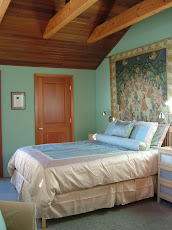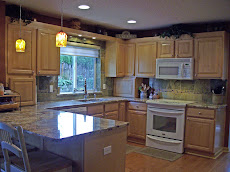I drew up plans for my ideal front yard and proposed my ideas to a local hardscape company, The Wall. Rick McCutcheon and I had worked together on other projects for years and I trusted him and his company for my project. (See additional post of plan examples). The three main ideas for the design were:
no slope
wider driveway
no grass (moss)
With that in mind, I chose to design retaining walls to level out my yard, expand my driveway two feet wider, have wide, platform steps up to my front door, a front yard patio, and team up with my colleague, Sarah Smith from Sarah Jane Designs, to do a planting selection and lay-out plan for all native, shade, and drought tolerant plants. I was not a good waterer and I also didn't want to shell out a lot of money for water. I definitely wanted to be more earth-friendly and practice water conservation. (its easy to conserve when one is cheap). I wanted to be able to use my front yard for interfacing with my neighbors and community and give my kids a safe, but fun yard for them to play in with their friends.
These pictures are Day 1 of the project that included both demolition and construction of the concrete forms.
The Wall came in and tore up the yard very early in the morning. They wanted to get all of the forms set up before the end of the day. One demolition request that I had was that they save all the dirt and sod. As a composter, I knew that flipping over the sod and moss and using it as a substrate base for my yard would give my soil the nitrogen boost it needed. My soil was mostly clay and this helped with the soil amendment that I was tasked with by Ms Sarah, the garden expert. The workers were relieved that they didnt have to haul it all away or load it into a dumpster (which saved me money and you know by now how cheap I am). I later used all of the decomposing soil as backfill after the walls were erected. When re-using the sod, rent a rototiller and grind it all up before using it as backfill. Much easier to shovel, fill and spread where needed.
Important Construction TIP:
When you are tearing up your front yard and your only point of access to your mailbox has been obliterated for a while, you will have issues with receiving your mail. You have options. You can have your mail held at the post office for you to pick up. You can have a safe path to your mailbox as determined by you and your carrier (They are particular about what works best for them). Or you can do what my carrier suggested I do (when I realized I hadn't thought this ) and have a plastic storage container with my address on it put at a place on site for his ease of access. As I work from home, this was easy for me to do without concern for mail theft. The other options may be more viable for those that work away from home.







Hey! I am glad to stop by your site and know more about hardscapes. Keep it up! This is a good read. I will be looking forward to visit your page again and for your other posts as well. Thank you for sharing your thoughts about hardscapes in your area.
ReplyDeleteTypical small-scale hardscaping examples include brick patios and sidewalks. Retaining walls are often used to create boundaries between hardscapes and earth landscaping features, or softscapes. From an urban planning perspective, hardscapes can include very large features, such as paved roads. Most artificial water features are technically hardscapes because they require a barrier to retain the water, instead of letting it drain into the surrounding soil.
Our residential and commercial landscaping services provide you with hardscapes that look great and are built-to-last. Call or email to have us begin working on your next project.
hardscapes Beverly MA
So much work for hardscaping! I'm sure the results will be well worth it. I just bought some EP Henry pavers that I plan to lay down this weekend- a considerably smaller undertaking than this. Best of luck to you!
ReplyDelete